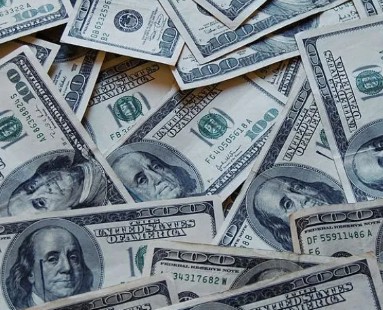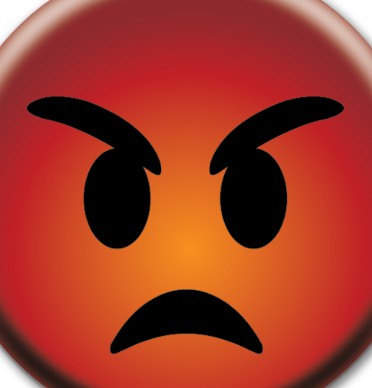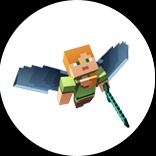8BitZac REVIEWS MC!?
The Financial History of Minecraft
Minecraft, one of the best-selling video games of all time, has had an incredible financial journey since its inception. Created by Markus "Notch" Persson in 2009, the game started as a small independent project but quickly grew into a global phenomenon, eventually leading to a massive acquisition by Microsoft.
Initially, Minecraft was developed by Persson as a passion project inspired by games like Infiniminer and Dwarf Fortress. He released the game in its early form in May 2009, and due to its unique sandbox mechanics, it quickly gained popularity. In June 2009, he began selling the game for around €10 (approximately $13 at the time). This simple pay-once model helped fund further development. By 2010, sales were already booming, allowing Persson to leave his day job and focus entirely on Minecraft.
In 2011, Mojang, the company founded by Persson, officially launched the full version of Minecraft. With continued updates and an ever-growing community, the game’s sales skyrocketed. By 2013, Minecraft had sold over 10 million copies across platforms, generating hundreds of millions of dollars in revenue. The introduction of merchandise, spin-off games, and mobile versions further expanded its profitability.
The biggest financial milestone in Minecraft’s history came in 2014 when Microsoft acquired Mojang and all rights to Minecraft for a staggering $2.5 billion. This acquisition ensured Minecraft’s continued growth, with Microsoft focusing on expanding the game’s reach through new updates, educational editions, and cross-platform play.
Since then, Minecraft has continued to thrive financially. With a steady stream of content updates, marketplace sales, and an ever-growing player base, it remains one of the most profitable games in history. As of 2023, Minecraft has sold over 300 million copies, cementing its legacy as both a creative masterpiece and a financial success.

The Controversial History of Minecraft
Minecraft, while being one of the most beloved video games of all time, has also had its fair share of controversies. Since its creation in 2009 by Markus "Notch" Persson, the game has faced various disputes, from developer-related conflicts to community backlash and corporate decisions.
One of the earliest controversies surrounding Minecraft involved its creator, Notch. As the game gained popularity, Notch became a well-known figure in the gaming community. However, his outspoken nature on social media led to several public controversies, including inflammatory political and social commentary. This ultimately contributed to Microsoft distancing itself from him after acquiring Mojang in 2014 for $2.5 billion.
The Microsoft acquisition itself was another point of contention. Many fans were concerned that a large corporation taking over would negatively impact the game’s creative direction. Some feared excessive monetization, while others worried that updates and community interactions would change under new leadership. While Microsoft has largely maintained Minecraft’s integrity, the introduction of features like the Minecraft Marketplace and Realms subscriptions led to ongoing debates about the game’s monetization.
In addition to corporate decisions, Minecraft has faced controversies over in-game content. The game's player base includes a large number of children, leading to concerns about online safety, particularly in multiplayer servers. Reports of inappropriate behavior, cyberbullying, and scams within Minecraft’s online community have sparked discussions about the responsibility of Mojang and Microsoft in moderating user-generated content.
Furthermore, changes to the game, such as updates that alter core mechanics, have sometimes sparked backlash from dedicated players. For example, major changes to combat mechanics in the Java Edition were met with mixed reactions, with some players feeling that the update strayed too far from the original experience.
Despite these controversies, Minecraft remains an incredibly successful and influential game. While debates over its development and community management persist, its impact on the gaming world is undeniable. The game continues to evolve, and as it does, so will the discussions surrounding its legacy and management.

 100
Play
100
Play
The Community of Minecraft
Minecraft is more than just a game; it is a global phenomenon with a vast and diverse community. Since its creation in 2009 by Markus "Notch" Persson, the game has fostered a unique and creative player base that has contributed significantly to its longevity and cultural impact.
One of the most defining aspects of the Minecraft community is its creativity. Players have used the game as a canvas to build everything from simple houses to intricate replicas of real-world landmarks. This has led to the rise of massive community-driven projects, such as entire cities, functional computers built using redstone, and even playable mini-games within Minecraft itself. Platforms like YouTube and Twitch have played a crucial role in showcasing these creations, turning Minecraft content creators into influencers with millions of followers.
Modding has also been a huge part of the Minecraft community. From adding new mechanics and creatures to creating entirely new gameplay experiences, mods have kept the game fresh and exciting. Websites like CurseForge and Planet Minecraft serve as hubs for modders to share their work, allowing players to customize their game in endless ways. Some mods have even influenced official updates, demonstrating Mojang’s acknowledgment of community contributions.
Minecraft's multiplayer servers have further shaped its community by fostering social interaction and competition. Popular servers like Hypixel, Mineplex, and Hermitcraft offer various game modes, from mini-games to survival and role-playing experiences. These servers create unique sub-communities within Minecraft, each with its own culture and traditions.
Despite its positive aspects, the Minecraft community has faced challenges, including issues with online safety and moderation. With a large number of young players, concerns about cyberbullying and inappropriate content have led to discussions on how to better protect users in online spaces. Microsoft and Mojang have implemented measures such as reporting systems and content moderation to address these concerns.
Overall, the Minecraft community remains one of the most passionate and creative in gaming history. It continues to grow and evolve, ensuring that the game stays relevant and engaging for players of all ages. Whether through building, modding, or multiplayer interactions, the community is a driving force behind Minecraft’s enduring success.


